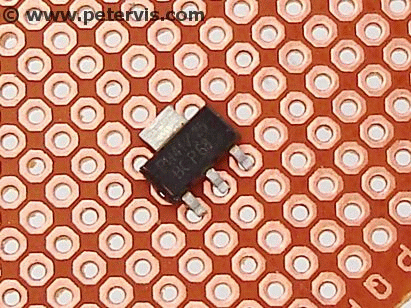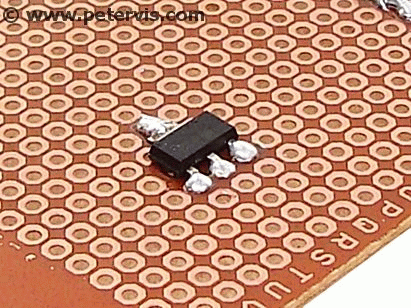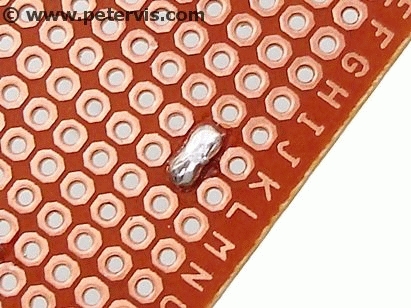Soldering SMD Guide

A surface-mount device (SMD) is a very delicate component because it is extremely sensitive to heat. Extra care is required when operating on such components.
Installing and removing these devices require a little more dexterity, and the use of tweezers and a magnifying glass are vital.
Contrary to popular belief, SMD components can have the standard 0.1-inch pitch lead distance. I have soldered many onto matrix boards without any complications. Many packages are large enough to work with, and do not require a microscope.
For example, here is a 3.3 V regulator of the type used on the Raspberry Pi computer. As you can see, its leads match the pads on this matrix board. For soldering SMD, I would use a 22-gauge (0.7 mm diameter) Omega solder, together with a fine pointed (1 mm) Antex tip. Something like the B110660 1.0 mm single faced bit would work fine. The Antex CS, TCS, TC50, and SD50 irons can also use this bit.
SMA Glue

The proper way to work with surface mount components is to use special glue called Surface Mount Adhesive (SMA). For example the SMA10SL 10 ml adhesive syringe, typically works for most SMD work. The first step is to apply a small spot of glue to the component body, and align the leads to match perfectly with the pads. Once the glue has dried and bonded the component to the PCB, you can then solder all of the leads without any problems.
Solder Bridges

Bridges are not always bad when using this type of matrix board. For example on a matrix board such as this, it is a quick and convenient way to join two pads without using a wired link. Learning how to create very thin solder bridges is also a good skill to have, as well as knowing how to avoid creating them when not needed.
This Article Continues...
A Soldering Guide for Beginners, Kids, and Electronics StudentsSoldering Guide: Safety Tips
Choosing the Right Solder Wire
How to Solder
Soldering Guide Basics
Soldering SMD Guide
Soldering in Space
How to Choose a Soldering Iron
Omega: Rosin and Lead Free Solder